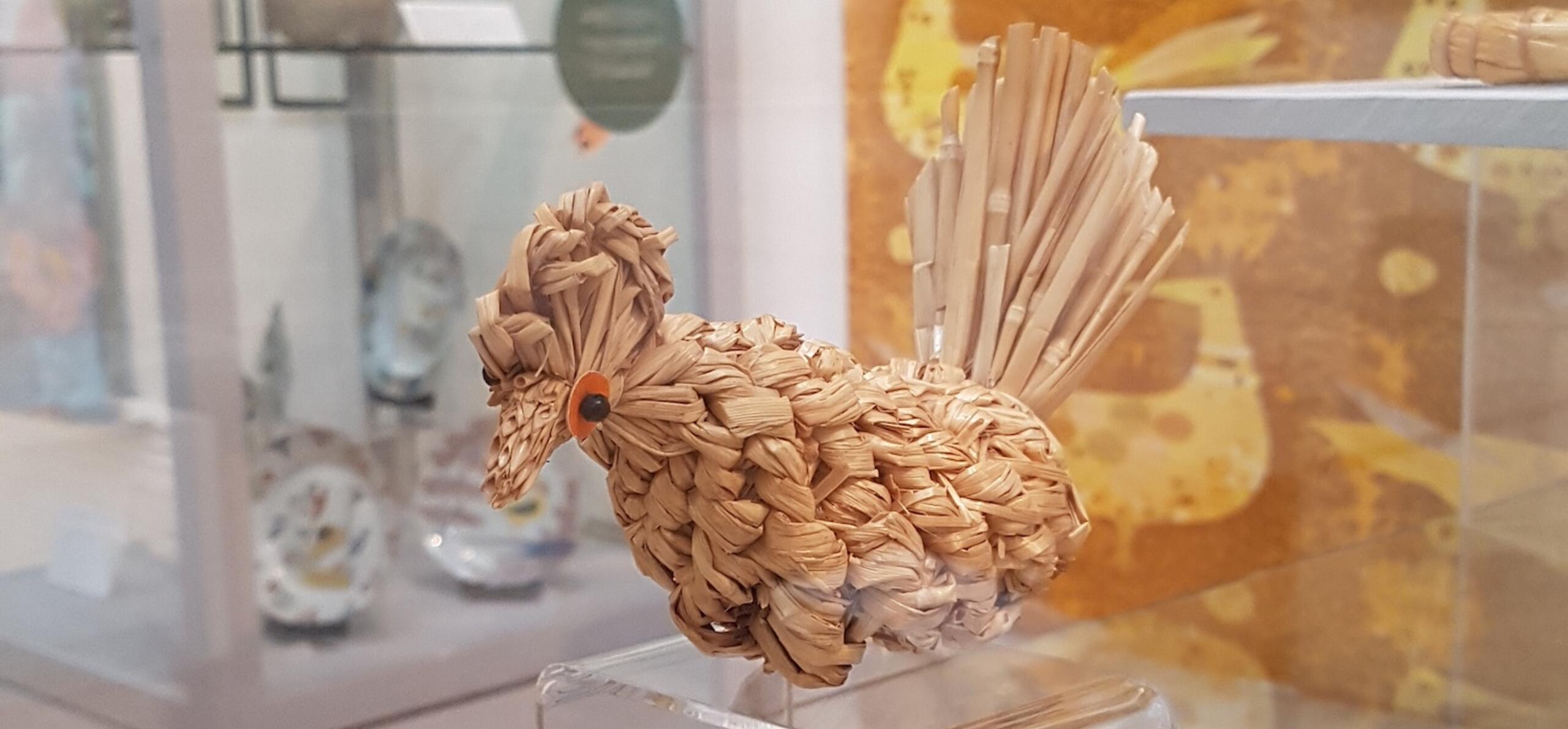These straw birds are examples of corn dollies, figures made from ‘corn’ straw. They featured in our exhibition: ‘ANIMAL: World Art Journeys’, and are on loan from The Museum of English Rural Life.
The corn dolly was originally an object used in rites and rituals, and in many parts of the world it was believed that the ‘Corn Goddess’ lived in the crop and died when it was harvested. Images of the goddess, or other talismans, were woven from the last sheaf to be reaped and carefully preserved to ensure an abundant crop the following year. Straw cut by combine harvesters is not suitable for making corn dollies so as harvesting became more mechanised corn dollies slowly stopped being made. By the 20th century corn dollies had lost their ritual associations. From the 1950s there was an effort to preserve rural crafts, like corn dolly making.
Find details of how to made a corn dolly from the Eden Project.
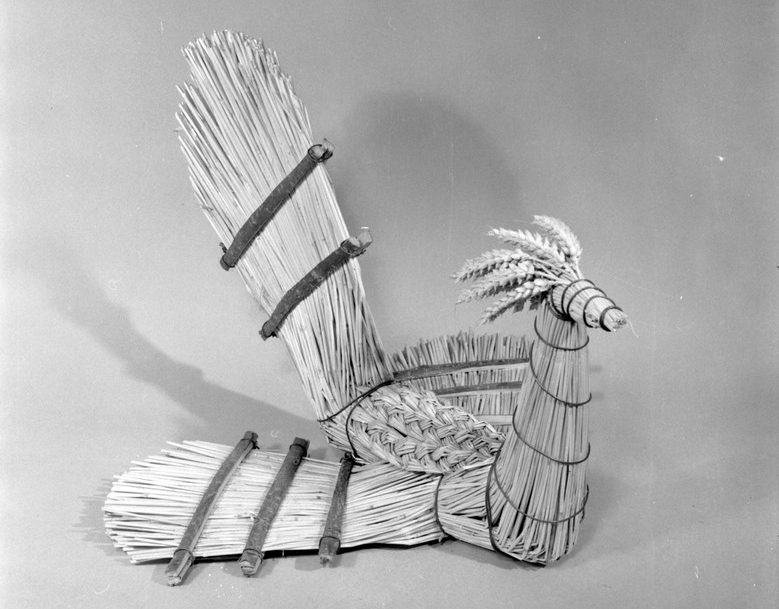
Cockerel, by Lettice Sandford. The Museum of English Rural Life, MERL 79/60
This cockerel was made by Lettice Sandford. This cockerel was copied from another cock dolly in the museum collection. The original cockerel was made for Mr Massingham by a Worcestershire thatcher. The fan wings and tail are held flat with strips of ash wood. Ears of wheat form the crest of the bird.
The cock is a common symbol in the harvest tradition and cock dollies were often either set on top of the hayrick or mounted on poles as weather vanes.
Museum number MERL 79/60
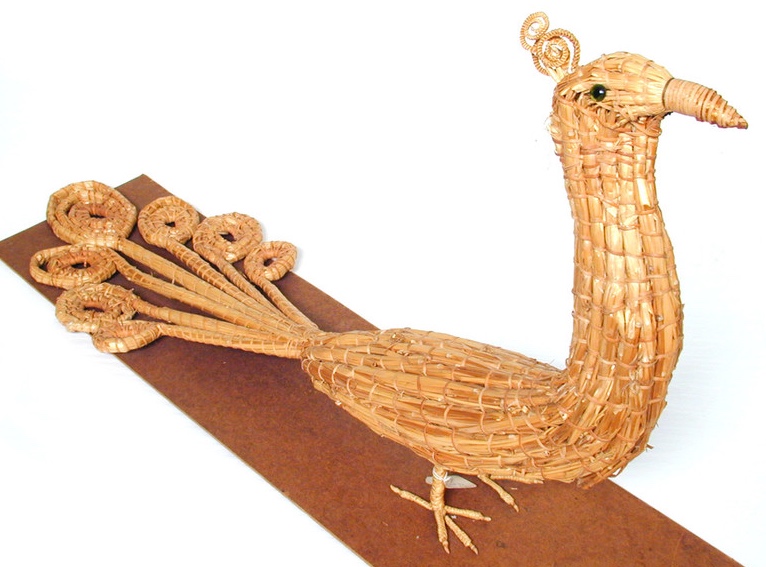
Peacock, by Alec Coker. The Museum of English Rural Life, MERL 86/194
This peacock was made by Alec Coker. Alec Coker was a well known teacher and maker of corn dollies. The body of this bird is made from thick bands of corn stalks bound together to resemble lipwork. Lipwork is a technique of binding bundles of straw together with bramble.
Museum number MERL 86/194
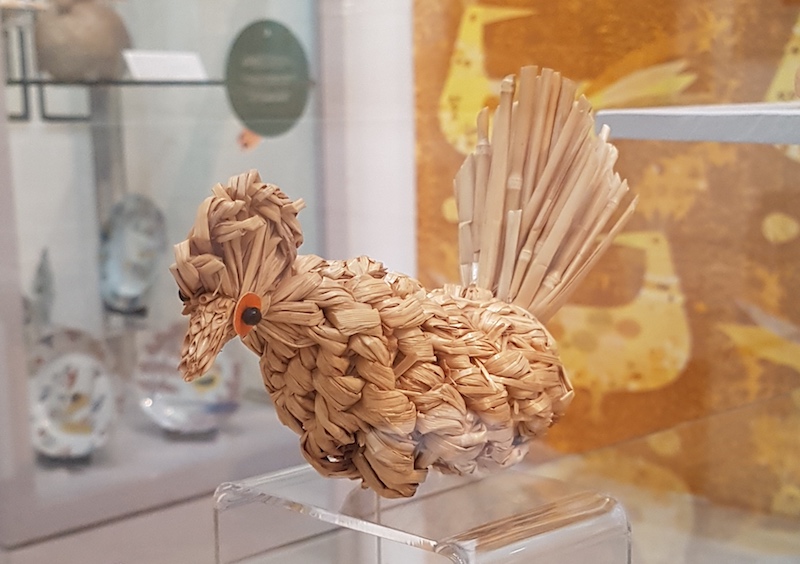
Rooster, by Doris Johnson. The Museum of English Rural Life, MERL 86/68
This rooster was made by Doris Johnson. It was produced with an experimental technique of multi-strand spiral. The spirally woven groups of straw give a thick effect to the body. The tail is made of the stick ends of the corn.
Museum number MERL 86/68
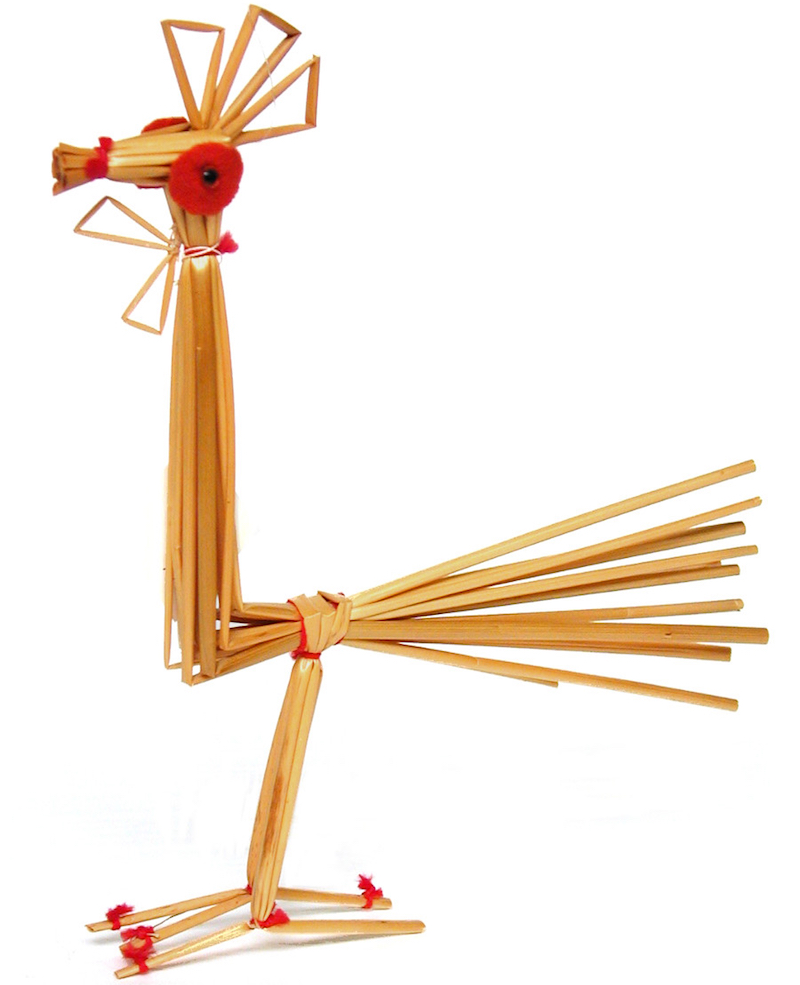
Scandinavian-style rooster. The Museum of English Rural Life, MERL 86/75
This is a Scandinavian-style tied straw cock. The straw ends are tied with red wool, with felt and bead for the eye. It was collected by Alec Coker whose wide ranging collection of ‘corn dollies' includes figures, love tokens, crosses, Scandinavian star designs, and Far Eastern shrine dolls made from ‘corn’ straw. During the 1960s to 1980s he taught and spread knowledge of corn dolly making around the country.
Museum number MERL 86/75
This handsome rooster has inspired one of our online children's activities, The Story of Chicken Licken storybook
